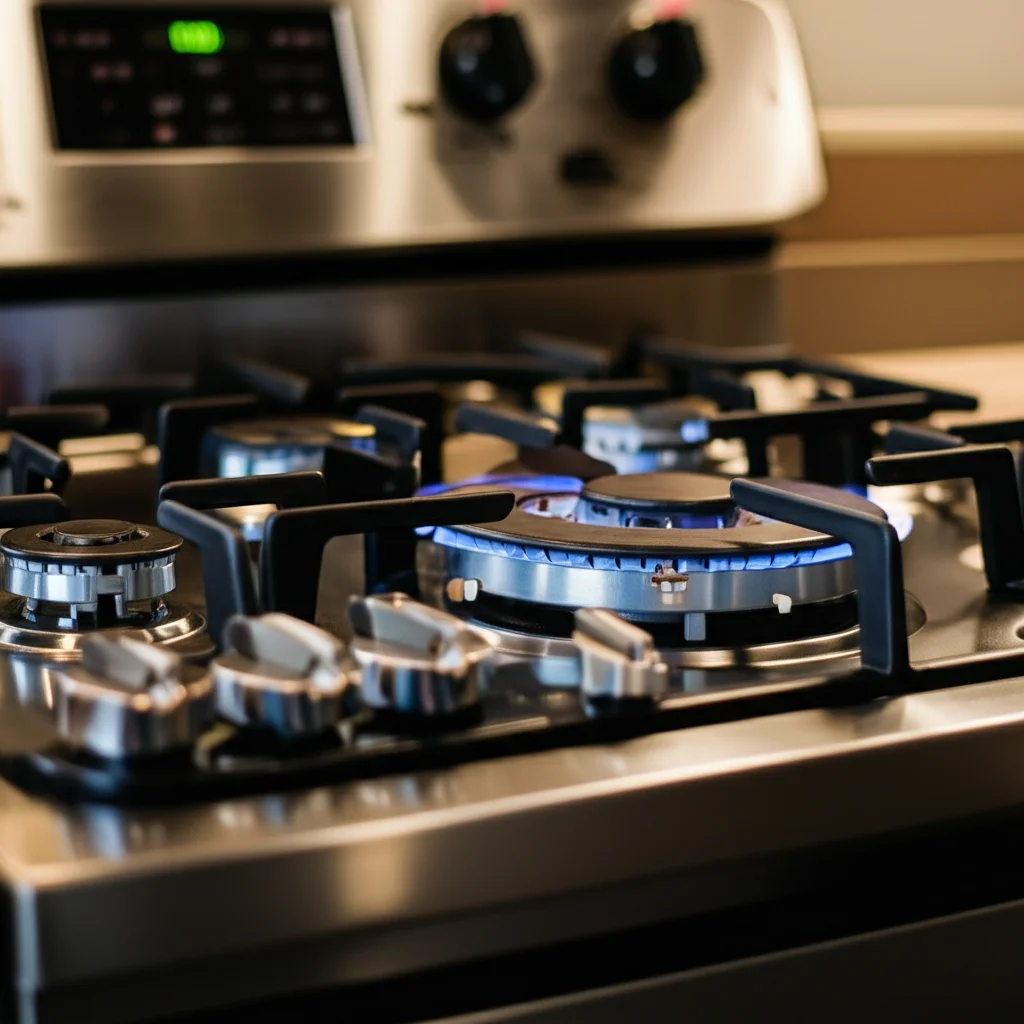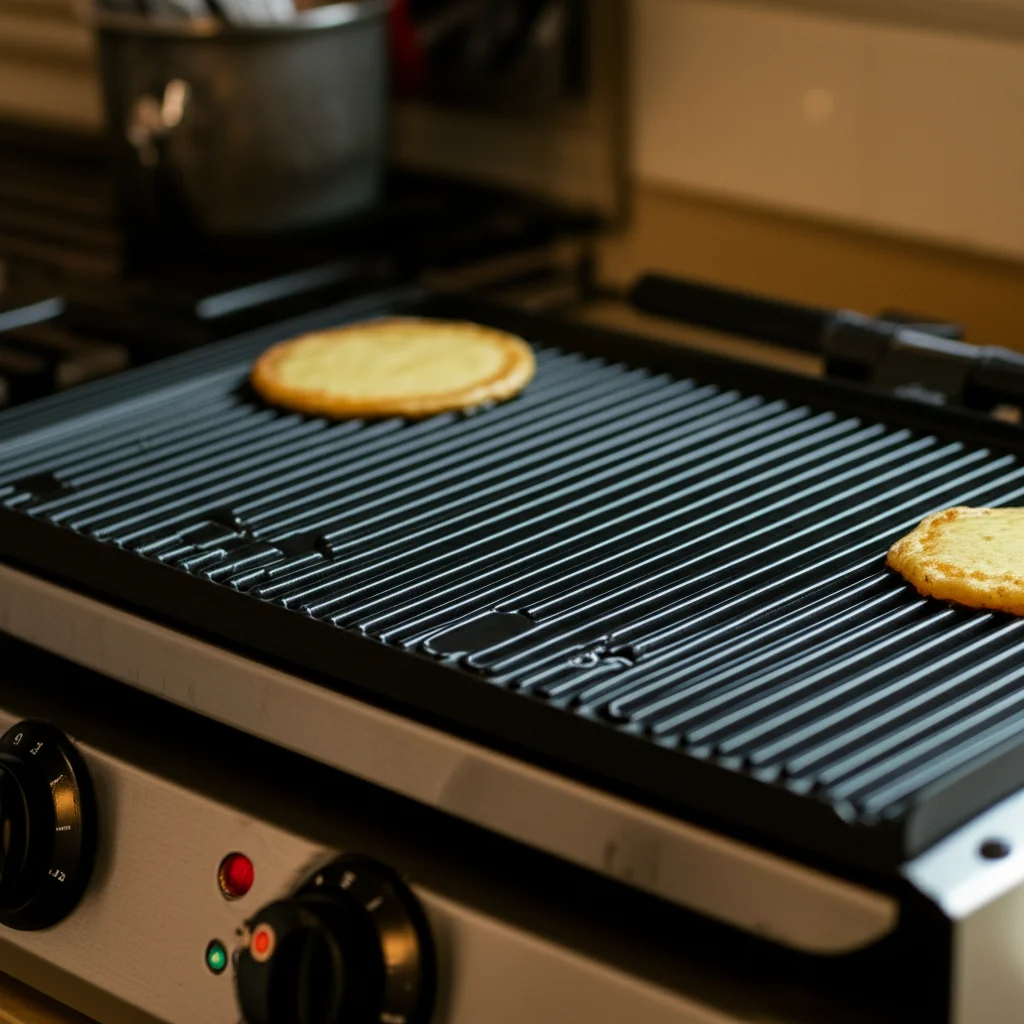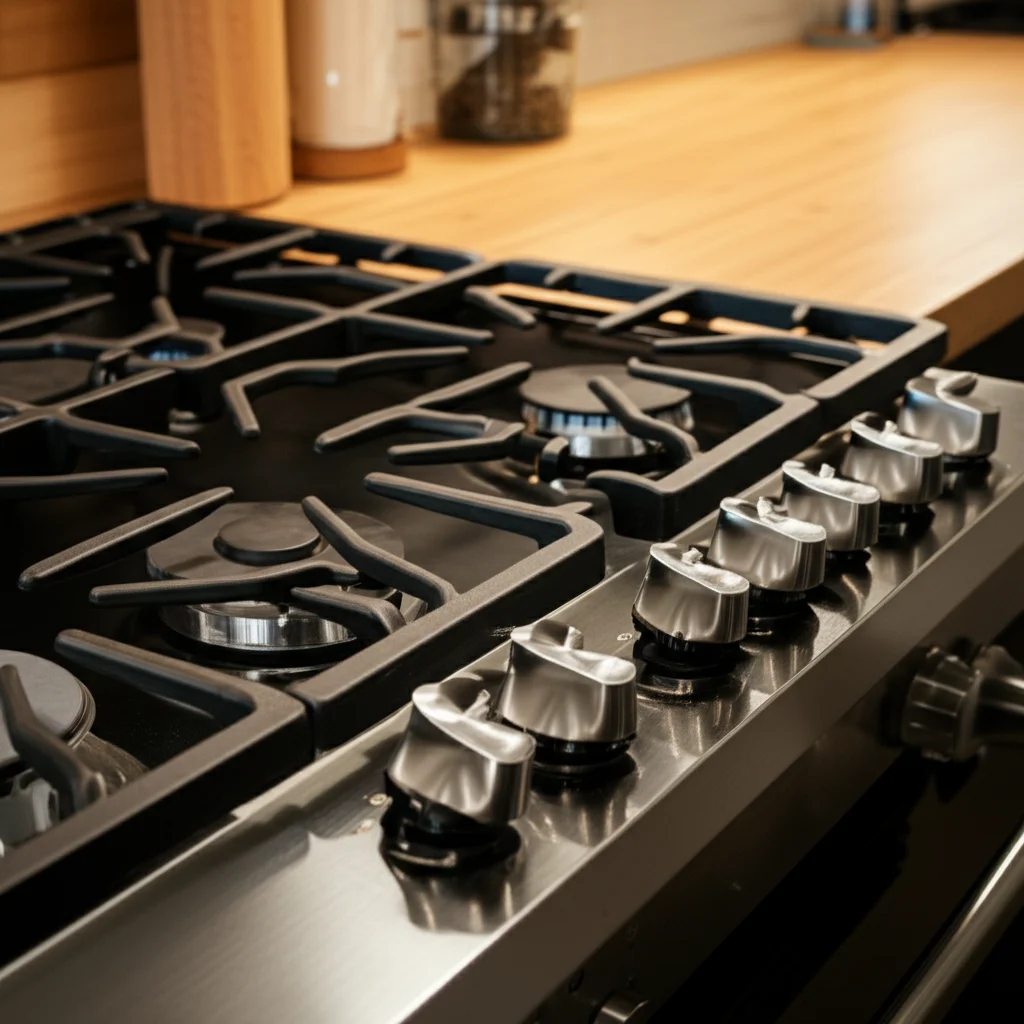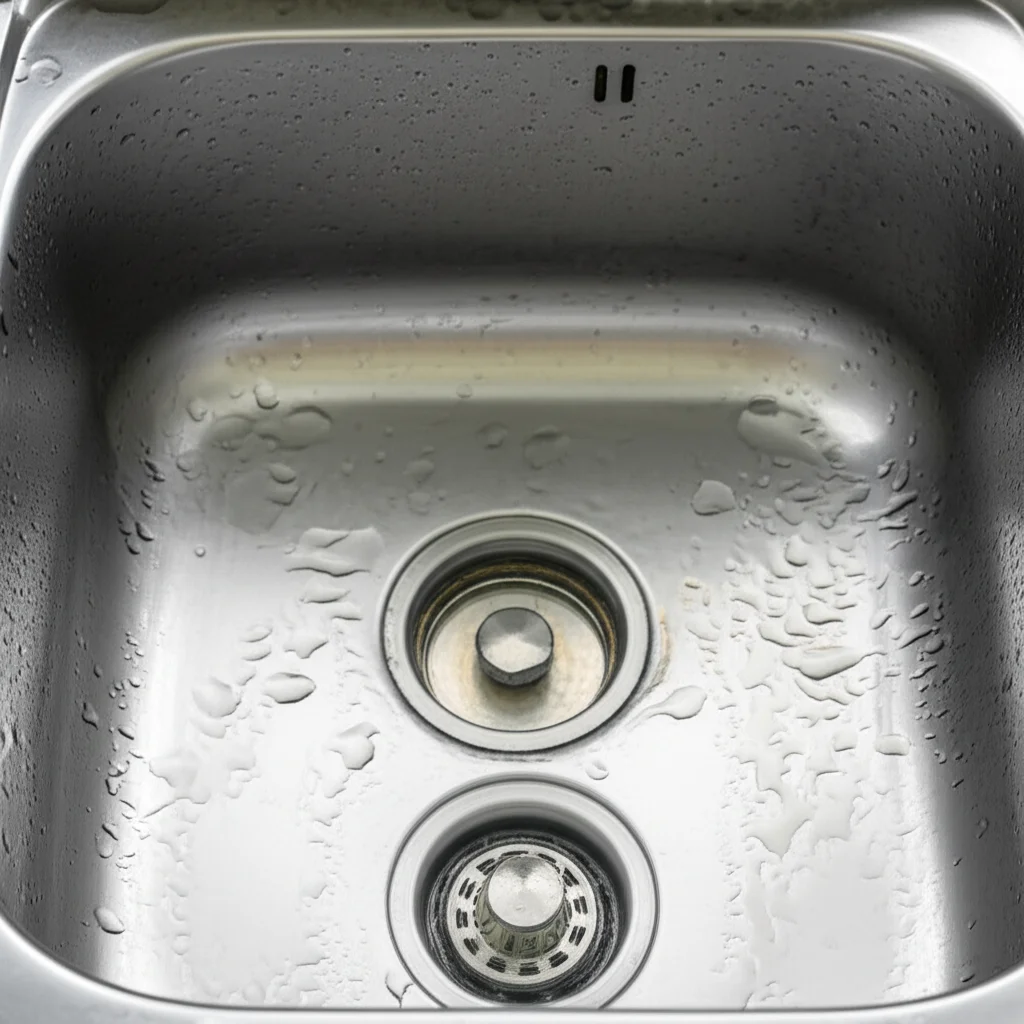· Todd Martin · Kitchen Maintenance · 17 min read
How To Clean Pressure Cooker

Keep Your Pressure Cooker Spotless: A Complete Cleaning Guide
A pressure cooker is a workhorse in many kitchens. It helps us prepare delicious meals quickly. Keeping it clean is not just about looks; it is about safety and performance. A dirty pressure cooker can harbor bacteria. It can also fail to build proper pressure. Learning how to clean a pressure cooker correctly extends its life. It also ensures every meal is safe and tasty. I will walk you through easy steps to keep your cooker in top shape.
Takeaway
To ensure your pressure cooker works safely and lasts long, consistently clean it after each use. Focus on disassembling parts like the gasket and valves. Use mild soap and water for routine cleaning. Tackle stubborn stains with natural solutions like vinegar or baking soda. Proper cleaning prevents food buildup and maintains pressure sealing.
How do you clean a pressure cooker effectively?
To effectively clean a pressure cooker, disassemble all removable parts, including the lid, gasket, and vent pipe. Wash the pot and lid with warm, soapy water. Clean the gasket and valves thoroughly to remove food debris. Dry all components completely before reassembling to prevent corrosion and maintain optimal performance.
Understanding Your Pressure Cooker’s Components
Before we dive into cleaning, it helps to know your pressure cooker better. Different parts require different cleaning approaches. Identifying these parts makes the cleaning process easier. It also ensures you clean every critical area. I find that knowing each piece helps me clean more effectively.
Your pressure cooker has several main components. First, there is the main pot. This holds your food. Second, you have the lid, which seals the pot. The lid is home to several important safety features. These include the gasket, the vent pipe, and the pressure regulator valve.
The gasket is a rubber or silicone ring. It creates an airtight seal between the pot and the lid. This seal is crucial for building pressure. The vent pipe, also called the steam release pipe, lets steam escape under control. The pressure regulator valve maintains the correct pressure inside. Some cookers also have a safety valve. This valve acts as a backup. Each of these parts needs careful attention during cleaning. Neglecting them can lead to poor performance or even safety issues.
Routine Cleaning After Every Use
Cleaning your pressure cooker after each meal is essential. This prevents food from drying and sticking. It also stops odors from building up. Routine cleaning is simple and quick. It keeps your cooker ready for your next culinary adventure. I always make sure to do this step.
First, let the pressure cooker cool down completely. Never try to clean a hot cooker. Once cool, remove all food residue from the pot. You can scrape off large pieces with a plastic spatula. Fill the pot with warm water and add a few drops of dish soap. Let it soak for a few minutes. This helps loosen any stuck-on food.
Next, wash the inside and outside of the pot with a soft sponge or cloth. For the lid, carefully remove the gasket. Wash the gasket separately with warm soapy water. Inspect it for any cracks or damage. Clean the vent pipe and pressure regulator valve opening. Use a small brush or toothpick to ensure no food particles block them. Rinse all parts thoroughly under running water. Ensure no soap residue remains. This routine cleaning keeps your pressure cooker hygienic and functional.
Disassembling Your Pressure Cooker for Cleaning
Proper disassembly is key for thorough cleaning. Each pressure cooker model might differ slightly. However, the basic steps are usually the same. Taking it apart lets you access hidden areas. This ensures no food residue is left behind. I always check my manual if I am unsure.
Begin by ensuring the pressure cooker is completely cool. Once cool, detach the lid from the pot. Next, locate the gasket. This rubber or silicone ring typically sits in a groove around the lid’s rim. Gently pull it out. Some gaskets are easier to remove than others. Be careful not to stretch or tear it.
After the gasket, focus on the lid’s internal components. This usually includes the pressure regulator (weight or valve) and the vent pipe cover. These parts often twist or unclip. Many pressure cookers also have a small anti-clog valve or safety valve. These can sometimes be gently pushed out or unscrewed from the inside. Always check your cooker’s manual for specific instructions. Proper disassembly ensures you can clean all parts effectively, preventing blockages and maintaining safety.
Deep Cleaning Stubborn Stains and Odors
Sometimes, routine cleaning is not enough. Food can burn onto the bottom, or odors can linger. Deep cleaning tackles these tougher issues. It restores your pressure cooker’s shine and freshness. I use simple household items for this. These methods are effective and safe.
Tackling Burnt Food and Stains
Burnt-on food is a common challenge. Do not scrape aggressively with metal tools. This can damage the surface. Instead, try soaking. Fill the pot with hot water, add a few drops of dish soap, and let it sit overnight. For really stubborn burnt food, try boiling water with a few tablespoons of baking soda in the pot for 10-15 minutes. This often loosens the residue. Then, use a plastic scrubber to gently remove the softened food. For stainless steel models, this method is very effective. If you encounter general tough stains on the exterior or interior, remember that stainless steel responds well to specific cleaning methods. You can learn more about how to keep it gleaming by checking out how to clean stainless steel.
For discoloration or water spots, white vinegar works wonders. Mix equal parts white vinegar and water in the pot. Bring it to a boil for a few minutes. Let it cool, then wash as usual. This can also help with mineral deposits. For comprehensive guidance on using vinegar for various cleaning tasks, consider exploring articles like how to clean shower with vinegar or how to clean mold with vinegar. While these refer to different cleaning contexts, the principles of vinegar’s acidic cleaning power remain relevant.
Eliminating Lingering Odors
Pressure cookers can sometimes retain food odors, especially after cooking strong-smelling dishes. To eliminate these smells, try a vinegar bath. Fill the pot with water, add a cup of white vinegar, and bring it to a boil for 5-10 minutes. Let it cool, then empty and wash. Another effective method is to use baking soda. Make a paste of baking soda and water. Spread it inside the pot and on the lid’s interior. Let it sit for several hours or overnight. Then rinse thoroughly. You can also place a few crumpled newspaper sheets inside the dry pot overnight. Newspaper absorbs odors. Always ensure the cooker is completely dry before storing it. This prevents new odors and mildew.
For particularly tough stains at the very bottom of the pot, similar techniques used for general cookware can be helpful. You might find some useful tips by reading about how to clean bottom of pan, as many of the principles for tackling baked-on residue apply.
Specialized Cleaning for Pressure Cooker Parts
Certain pressure cooker parts need specific attention. The gasket, valves, and vent pipe are critical for safe operation. Neglecting them can lead to pressure issues or leaks. I make sure to give these components a thorough clean. They are small but mighty.
Cleaning the Gasket
The gasket is the pressure cooker’s seal. It can absorb odors and food particles. Always remove the gasket after each use. Wash it with warm, soapy water. Use your fingers to gently rub it clean. Rinse it thoroughly. Make sure no food bits are clinging to it. Inspect the gasket for cracks, stiffness, or signs of wear. If it looks damaged, replace it. A worn gasket will not create a proper seal. This means your cooker will not reach pressure. Some manufacturers recommend boiling the gasket in water with a bit of vinegar every few months. This helps to keep it flexible and removes absorbed odors. Always allow the gasket to air dry completely before reinserting it.
Cleaning Valves and Vent Pipe
The pressure regulator valve and vent pipe are vital for safety. Blockages can be dangerous. Food particles can easily get stuck here. After each use, inspect these openings. For the vent pipe, hold the lid up to a light source. You should be able to see through the opening. If not, use a thin brush or a toothpick to clear any blockages. Never use sharp metal objects that could scratch the surface.
For the pressure regulator valve, follow your manual’s instructions for removal. Often, it involves twisting or unscrewing. Wash it thoroughly with warm soapy water. Ensure the small hole is clear. The safety valve, if present, also needs inspection. These usually have a small pin that should move freely. If it sticks, gently clean around it with a damp cloth. Never try to force it. Proper cleaning of these parts ensures steam can escape safely and pressure can build correctly.
Cleaning Different Types of Pressure Cookers
Pressure cookers come in various materials and designs. Each type might have slightly different cleaning needs. Understanding these differences helps you clean smarter. I consider the material when choosing cleaning supplies. This protects the finish and ensures longevity.
Stainless Steel Pressure Cookers
Stainless steel pressure cookers are durable and popular. They resist stains well but can show water spots or heat tints. For routine cleaning, warm soapy water works best. For tougher stains or discoloration, a baking soda paste is excellent. Mix baking soda with a little water to form a paste. Apply it to the stained areas. Let it sit for 15-20 minutes, then scrub gently with a non-abrasive sponge. Rinse well. For a shiny finish, wipe with a soft cloth after drying. You can also use a specialized stainless steel cleaner. Always rub in the direction of the grain. Remember, how to clean stainless steel provides a lot of great general information that applies here.
Aluminum Pressure Cookers
Aluminum pressure cookers are lighter and often less expensive. However, they can oxidize, leading to darkening or pitting. They are also more prone to reacting with acidic foods. Avoid harsh abrasive cleaners or steel wool on aluminum. These can scratch the surface. Use mild dish soap and a soft cloth for regular cleaning. To remove oxidation or brighten dull aluminum, you can boil apple peels or cream of tartar mixed with water in the pot. Let it cool, then scrub gently. Always dry aluminum cookers immediately after washing. This prevents water spots and further oxidation. Avoid putting aluminum cookers in the dishwasher, as this can cause discoloration.
Electric Pressure Cookers
Electric pressure cookers like Instant Pots have a heating element base. This base should never be submerged in water. The removable inner pot is usually stainless steel and can be cleaned like any other stainless steel pot. The lid also comes apart for cleaning the gasket and valves. For the main unit (the base), wipe it down with a damp cloth. Use a slightly damp cloth with mild soap for spills. Make sure no water gets into the electrical components. Dry it immediately. Clean the condensation collector regularly. This small cup collects moisture. It usually slides out for easy emptying and washing. Always unplug the unit before cleaning the base.
Preventing Future Buildup and Maintaining Performance
Proactive measures keep your pressure cooker clean and functioning. A little effort after each use saves a lot of deep cleaning time later. Good habits also extend the life of your appliance. I always focus on prevention first. This saves me time and effort.
Tips for Preventing Stains and Odors
To prevent food from sticking and burning, always use enough liquid when cooking. For starchy foods like rice or pasta, add a little oil to the water. This helps prevent sticking. Avoid overfilling the pressure cooker. This can cause food to rise and clog the valves. After cooking, let the cooker cool naturally or use a quick-release method carefully. This prevents food from baking onto the bottom as it cools.
To prevent odors, always wash the cooker promptly after use. Do not let food sit inside for long periods. If you cooked something with a strong smell, like curry or garlic, give the gasket and pot an extra wash. Consider using the baking soda paste method mentioned earlier. For storage, ensure the pressure cooker is completely dry. You can even place a paper towel inside the pot before putting on the lid. This absorbs any residual moisture and helps prevent musty smells. Store the lid upside down on the pot. This allows air circulation and prevents odors from becoming trapped.
Regular Maintenance for Longevity
Beyond cleaning, regular maintenance keeps your pressure cooker in top shape. Inspect the gasket regularly. Look for any cracks, tears, or signs of wear. A brittle or damaged gasket needs replacement. This is usually the first part to wear out. Check the vent pipe and pressure regulator valve for blockages before each use. A quick glance ensures they are clear. If you use a pressure cooker often, consider replacing the gasket yearly. This ensures optimal sealing and safety.
Also, store your pressure cooker properly. Keep it in a dry, cool place. Avoid storing heavy items on top of the lid. This can warp the lid or damage the valves. With proper cleaning and maintenance, your pressure cooker will serve you well for many years. It remains a reliable tool for quick, delicious meals.
When to Seek Professional Help or Replace Parts
Even with diligent cleaning and maintenance, parts of your pressure cooker can wear out. Knowing when to get help or replace components is important. This ensures your safety and the cooker’s efficiency. I always prioritize safety. If something seems off, I get it checked.
Identifying Wear and Tear
Regularly inspect your pressure cooker for signs of wear. The gasket is the most common part to show wear. Look for stiffness, cracking, or discoloration. If the gasket no longer fits snugly or if steam escapes during cooking, it needs replacing. The pressure regulator valve and vent pipe can also show wear. Check if the valve wobbles excessively or if the vent pipe seems corroded. Small metal parts can sometimes become loose. The handles on the pot and lid should also be secure. If they feel wobbly, tighten them if possible. If not, they may need replacement.
The bottom of the pot can sometimes develop pits or scratches. Minor scratches are usually fine. Deep pits can weaken the material. Any denting on the rim of the pot or lid can prevent a proper seal. If your pressure cooker consistently fails to reach pressure or leaks steam, even after cleaning, it likely indicates a worn part.
Knowing When to Replace Parts or the Entire Unit
Most pressure cooker manufacturers sell replacement parts. Gaskets are almost always replaceable. Vent pipe parts and pressure regulator weights are also commonly available. Consult your pressure cooker’s manual or the manufacturer’s website for specific part numbers. Replacing a worn part is often much cheaper than buying a new cooker.
However, there are times when it makes sense to replace the entire unit. If the pot itself is heavily corroded, deeply pitted, or warped, it’s safer to get a new one. If the lid is bent or if multiple critical safety features are failing, replacement is the best option. For older models, finding replacement parts can be hard. If your pressure cooker is very old (over 10-15 years) or has a history of performance issues despite cleaning, it might be time for an upgrade. Safety is paramount with pressure cookers. Do not take chances with a faulty unit.
Final Cleaning Tips and Best Practices
To summarize, effective pressure cooker cleaning involves regular attention to detail. Following best practices ensures maximum performance and safety. It is all about consistent care. I have learned these tips make a big difference. They keep my cooker working efficiently.
Always Read Your Manual
Every pressure cooker is slightly different. The manufacturer’s manual provides specific cleaning instructions. It will tell you how to remove specific parts. It will also list any detergents or methods to avoid. Always refer to your manual first. This prevents accidental damage and ensures proper care. It is your best resource for model-specific advice.
Avoid Abrasive Cleaners and Tools
Never use steel wool, abrasive scouring pads, or harsh chemical cleaners on your pressure cooker. These can scratch the surface of stainless steel. They can also damage aluminum. This can lead to corrosion or pitting. Stick to soft sponges, cloths, and non-abrasive scrubbers. Use mild dish soap for general cleaning. For tough stains, rely on natural solutions like baking soda or vinegar. These are effective without damaging the cooker’s finish.
Dry All Parts Completely
Moisture is the enemy of metal and rubber. After washing, ensure all parts are completely dry before reassembling or storing. This prevents water spots, rust, and mildew growth. Air drying is best. You can also use a clean towel. For gaskets, allow them to air dry fully. Do not reinsert them while damp. Storing the lid inverted on the pot promotes air circulation. This helps prevent trapped moisture and odors.
Store Properly
Store your pressure cooker in a cool, dry place. Ensure it is away from extreme temperatures. Do not store heavy items on top of the lid. This can deform the lid or damage the pressure regulator and valves. A well-maintained and properly stored pressure cooker will provide years of safe and efficient cooking. Regular cleaning and attention to these details will ensure your cooker remains a valuable kitchen asset.
FAQ Section
How often should I deep clean my pressure cooker?
You should deep clean your pressure cooker every 1-3 months, depending on how often you use it. This involves disassembling all removable parts and thoroughly cleaning them. Focus on the gasket, valves, and vent pipe. Regular deep cleaning prevents food buildup and ensures your pressure cooker operates safely and efficiently.
Can I put my pressure cooker in the dishwasher?
Many stainless steel pressure cooker pots are dishwasher safe. However, the lid, gasket, and delicate valve components are usually not. High heat and harsh detergents in dishwashers can damage seals and plastic parts. Always check your specific pressure cooker’s manual. Handwashing these sensitive parts helps preserve their lifespan and function.
How do I remove a white film from my aluminum pressure cooker?
A white film on aluminum pressure cookers is often oxidation or mineral deposits from water. To remove it, fill the pot with water and add a few tablespoons of cream of tartar or lemon juice. Boil for 10-15 minutes, then let it cool. Scrub gently with a non-abrasive sponge. Rinse and dry immediately. This restores the aluminum’s shine.
What should I do if my pressure cooker smells like old food?
If your pressure cooker retains food odors, wash all parts thoroughly. Create a paste with baking soda and water, spread it inside the pot and lid, and let it sit overnight. Alternatively, boil water with a cup of white vinegar in the pot for 5-10 minutes. Rinse well and ensure all parts are completely dry before storing, potentially with a crumpled newspaper inside.
Is it safe to use a pressure cooker with a discolored gasket?
A discolored gasket is not necessarily unsafe. However, if the discoloration comes with signs of wear like cracking, stiffness, or loss of elasticity, it is time to replace it. A worn gasket cannot create a proper seal, leading to steam leaks and preventing the cooker from reaching pressure. Prioritize replacement if the seal is compromised.
How do I clean clogged pressure cooker valves?
Clogged valves are a serious safety concern. To clean them, remove the pressure regulator and inspect the vent pipe opening on the lid. Use a thin brush, toothpick, or pipe cleaner to gently dislodge any food particles. Hold the lid to a light to ensure the path is clear. Never use metal objects that could scratch or damage the valve mechanisms.
Conclusion
Cleaning your pressure cooker correctly is vital for safety and performance. It ensures every meal you prepare is hygienic and delicious. We have covered routine cleaning, deep cleaning for stubborn issues, and specialized care for specific parts. Remember to understand your cooker’s components. Always give attention to the gasket, valves, and vent pipe. Proper maintenance means your pressure cooker will serve you for many years. It will continue to be a valuable tool in your kitchen. Make cleaning a regular part of your cooking routine. This simple habit keeps your pressure cooker in top condition.





